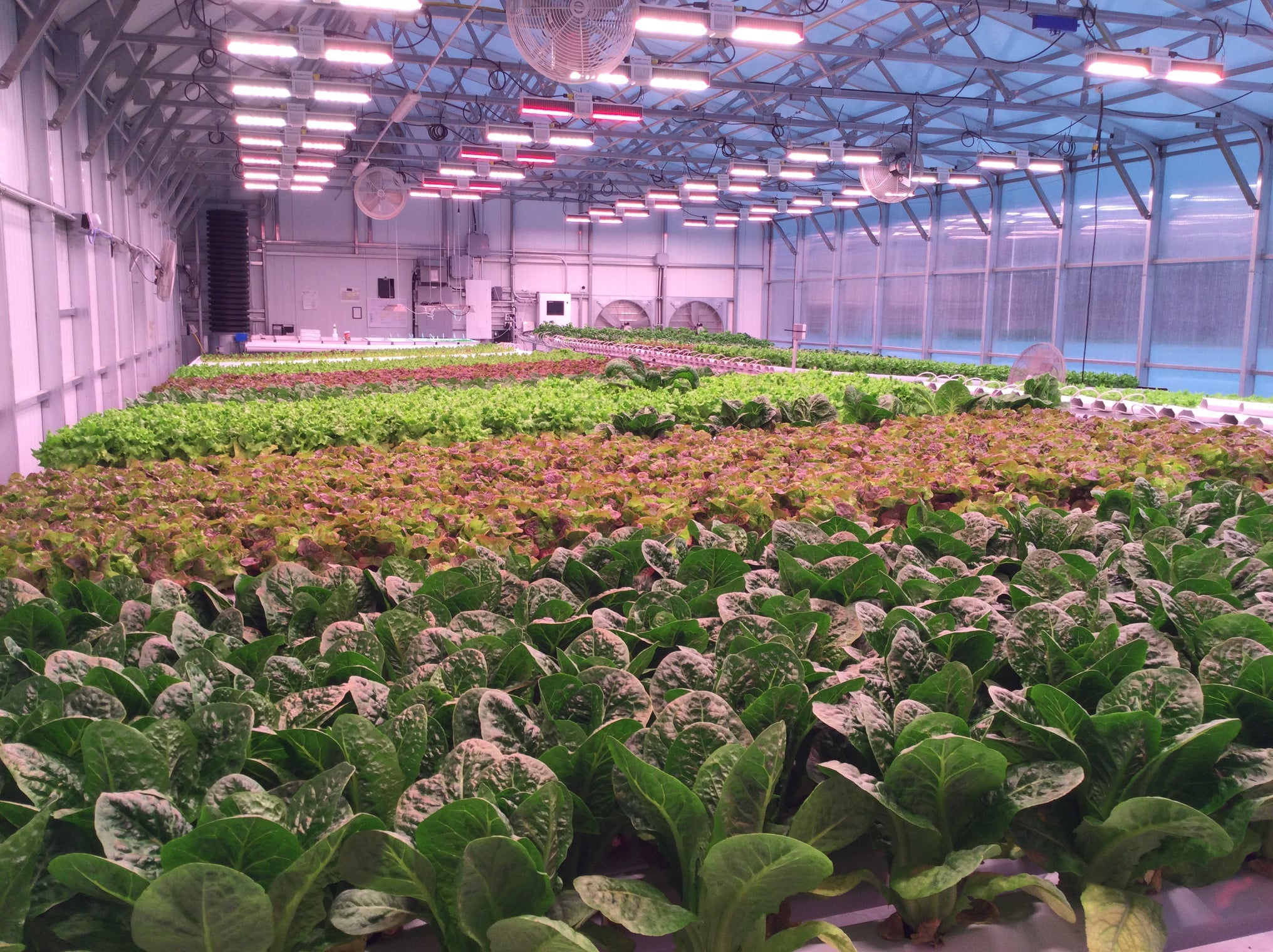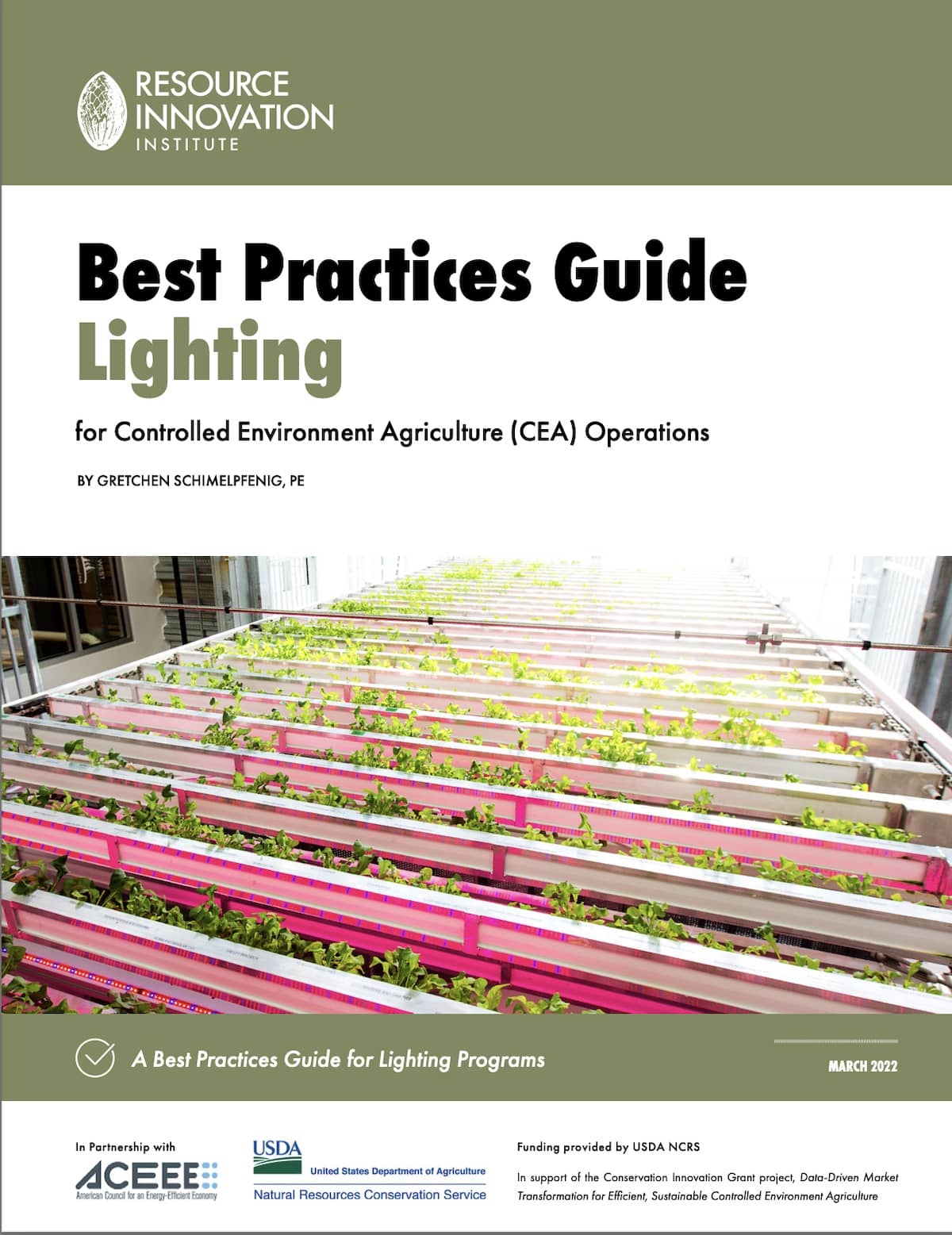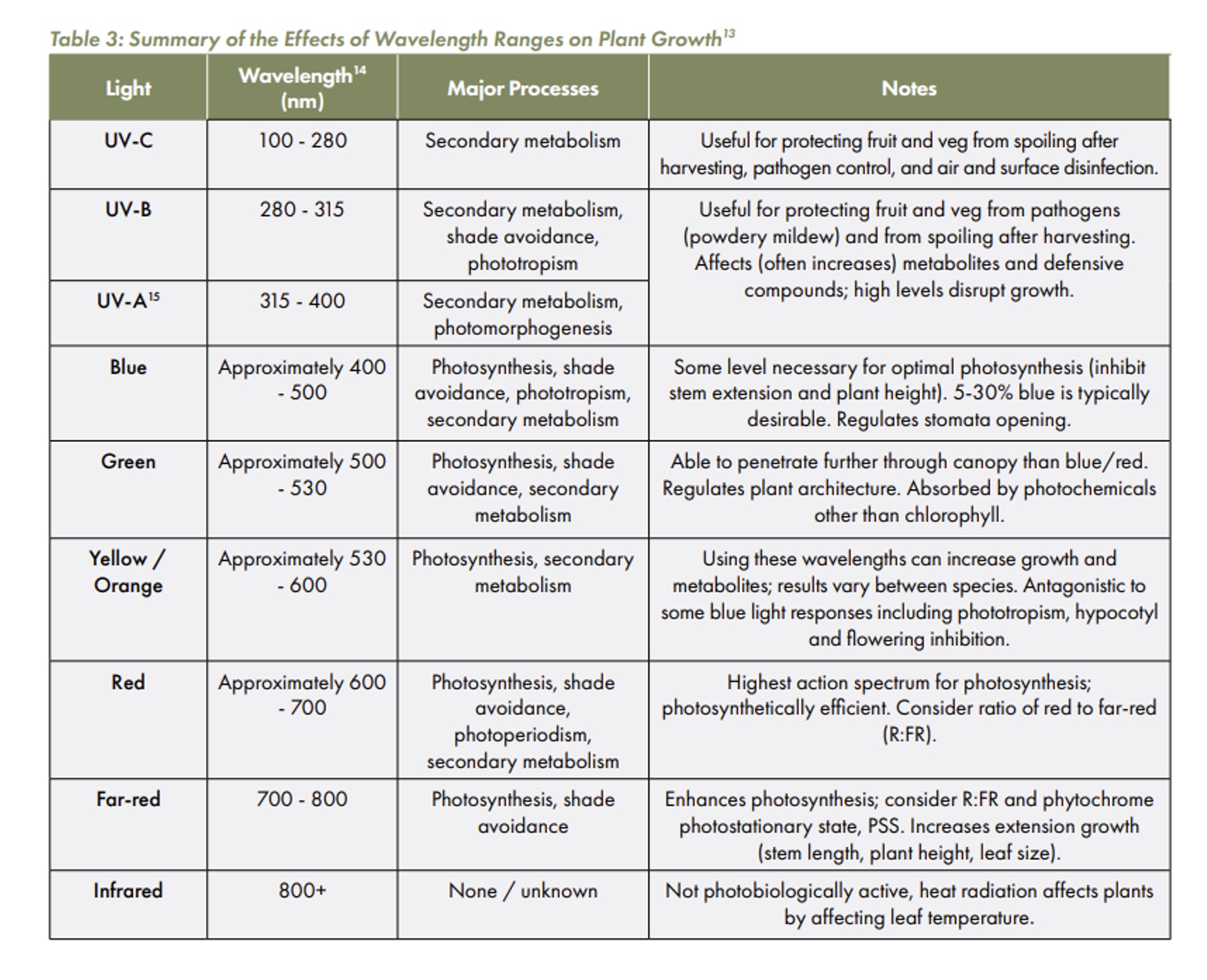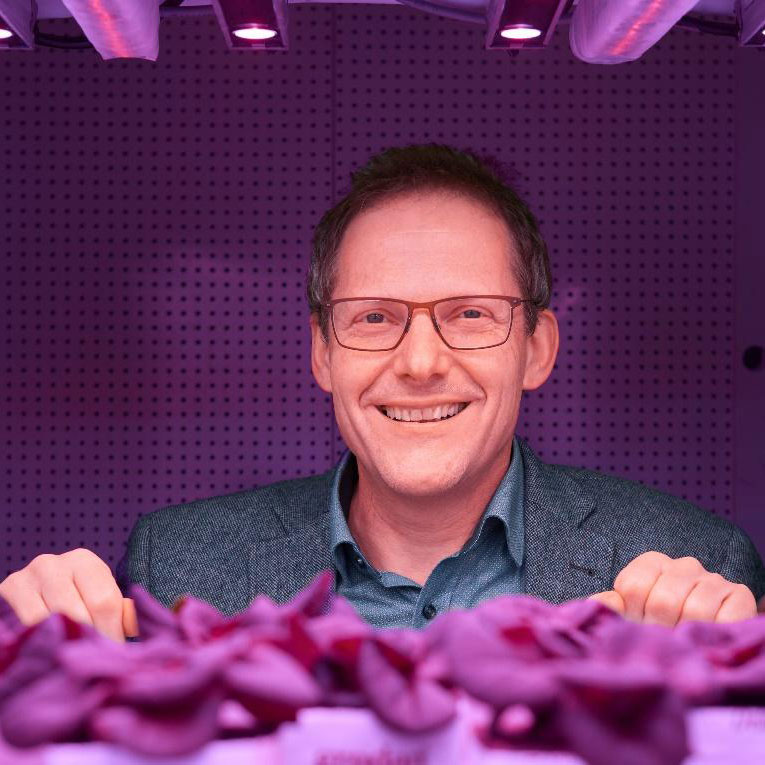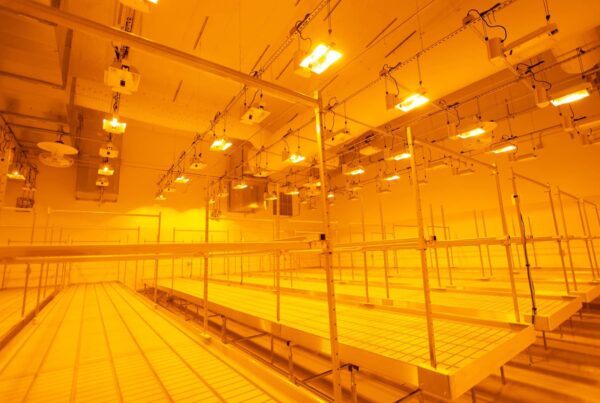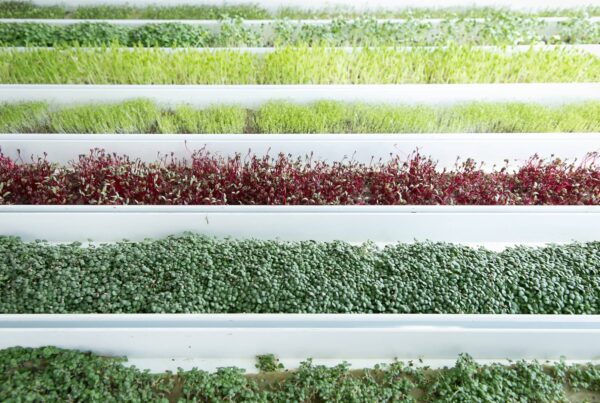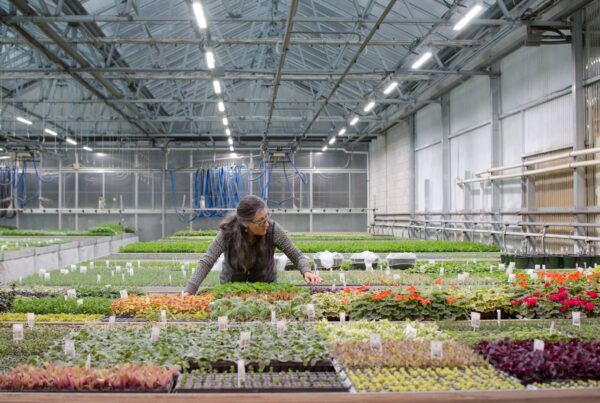Whether cultivating leafy greens, succulent fruits, or vibrant cannabis flowers, understanding how to optimize a CEA lighting setup can make all the difference in achieving remarkable yields and superior crop quality.
As we write in our Lighting Best Practices Guide, “[it] is crucial to maximize your return on investment for horticultural lighting systems, as this equipment can be in the top 50% of capital expenditures for CEA facility construction costs.”
Here, RII expert members from TSRgrow and Wageningen University offer five tips to help inform the way you approach lighting in your CEA facility, whether an indoor or a mixed-light structure. From selecting the perfect spectrum to fine-tuning light intensity and exploring cutting-edge technologies, equip yourself with the knowledge and tools to transform your CEA operation.
1. Consider lighting early in facility design.
A mistake that Mikail Sagal, president and co-founder at TSRgrow, sees some CEA operators make is delaying lighting decisions in the facility design process. “I think that’s where a lot of the optimization falls short,” he says.
Lighting fixture decisions should be made early and alongside environmental controls and fertigation choices to ensure these systems can communicate with one another. “You may make a great decision on lighting, HVAC, fertigation, and everything else, but being able to fully bring that into a holistic integration is important,” Sagal explains. “Lighting should be able to have … intelligence. It should offer avenues for meeting GMP compliance… and really drive a much higher level of control and integration than is typically considered.”
When evaluating lighting needs, “you need to make a decision about the intensity, about the photoperiod, and about the spectrum,” says Wageningen University’s Professor Leo Marcelis, who also is a Technical Advisory Council Lighting Working Group member.
“All three are very important. In general, the higher the intensity, the more the yield. But where is the optimum in terms of energy use and economic value? That’s not necessarily exactly the same. So usually the highest energy efficiency is at a lower intensity than at the highest economic profit.”
Marcelis notes that daily light integrals can be reached with longer photoperiods or longer intensities. Knowing early on the light intensity required for your crops will greatly inform your purchasing decision. In other words, “if you use the lights more hours a day, you can use a lower intensity.”
2. Worker comfort matters (in addition to crop productivity).
Plants are not the only thing exposed to your cultivation lights: Your employees also need to be taken into consideration when making lighting decisions. One question Marcelis brings up when it comes to employee conditions and comfort is: “Under what light do you want to work?”
Some cultivators might want to have lighting fixtures that emit only red and blue photons, resulting in a purple light (at least to the human eye), which can be fatiguing to some cultivation employees.
“If you add a little bit of green–usually that is not by a green LED because green LEDs are very inefficient but then usually that should come from a phosphor-coated white LED,” Marcelis explains. “That brings in some green to make the lights a bit more white. That’s more natural to work in than under the purple light.”
Beyond worker comfort, spectral output has a huge impact on plant growth outcomes. For example, the ideal spectrum for vegetative-state cannabis (more blue than red light, with a supporting blend of green/yellow-orange) varies from the typical spectrum used for its flowering state (more red than blue light, with supplemental far-red to help trigger flower growth, and enough green/yellow-orange light to create a full-plant spectrum).
Spectra for greenhouse-grown leafy greens typically differ from leafy greens grown indoors. Lighting spectra that supplement the full sun in a greenhouse (high blue/red light content) vary from lighting spectra used indoors (heavier red light rather than blue light, with nominal levels of balanced green/yellow/orange light to support healthy, flavorful yields).
For more details on how various light wavelengths impact plant growth, refer to the table below and RII’s Lighting Best Practices Guide.
3. Match intensities to grow periods.
Utilize an advanced lighting solution that is not limited to room or large zone dimming – granular control is critical to long term cultivation success. This allows localized lighting control over the crop/strain being grown while also allowing for adjustments based on micro climates or other environmental factors. Taking it a step further, one can develop recipes. Whether automated, artificial intelligence systems, or done through manual adjustments, being able to match lighting intensities to growth stages can allow CEA operations to maximize crop productivity while minimizing wasted energy resources. “Whether it’s a 60-day growth period or a 30-day growth period, you can automatically build recipes into an integrated system that can automatically adjust the intensity based on where you are in that growth cycle,” Sagal says.
“Whether it’s lettuce or cannabis or anything else, you can really define what you want that light to do over a growing period by setting a schedule and a light recipe. At the end of the harvest, you can then collect the data of what went into growing that crop” and correlate harvest results with lighting, nutrient inputs, and other environmental conditions, he adds. With that, CEA operators “can start to compare one crop to the next crop and really start to minimize costs,maximize yields and begin to optimize the cultivation/recipe for growing that crop/strain.” We call this crop steering through lighting.
4. Measure light levels throughout the facility.
On that note, tracking as many data points as possible in their CEA facility will allow CEA operators to get a better grasp on where they can optimize lighting.
Sagal also recommends operators audit their lighting systems every six to 12 months. “Having the tools to measure the light levels and then consistently going through and verifying those [via] a commissioning process and then an ongoing validation process. Whether it’s every six months or every year, you actually go in and check your baselines and see what’s going on and make any adjustments.”
For example, tracking which plants were harvested from which part of a cultivation area can help identify faulty equipment that needs repairs or replacement. Likewise, tracking environmental conditions can help identify microclimates that take away from crop uniformity.
“You don’t want to get to the end of the run and have no knowledge of what you grew,” Sagal says. “If you don’t have that feedback throughout the process, then it’s very hard to grow consistently and look at maximizing your yields or to optimize what you’re doing.”
5. Stay up-to-date on lighting research and efficiency trends.
As studies on lighting intensities enter the replication and validation phase, researchers on the cutting edge of CEA lighting increasingly are investigating the impact of light quality (aka spectrum) on crop outcomes. Already, some advanced lighting manufacturers are integrating spectral tuning features into their high-end, high-efficiency fixtures.
While most lighting-related energy savings will be achieved by adjusting intensity, manipulating spectral output can help CEA operators make crop- and even cultivar-specific adjustments.
“The spectrum describes where the crop grows best,” Marcelis says, as well as its energy efficiency. For example, “red LEDs have the best efficacy. Efficacy means converting electricity into light. So a relatively high fraction of red is, in general, quite good, but 100% red usually is not the best solution because then you don’t get the best crop. “You always need a minimum amount of blue light. It can be 10%, it can be 15%, it also depends on the crop and conditions,” Marcelis shares.
In the last decade, researchers have been examining the role far red might play in crop productivity. While Marcelis believes some amount of far red can be beneficial “I always recommend that [operators use] it only when [they] can control it separately,” he says, meaning it can be tuned out of the output when needed. “I have seen many positive results, but sometimes it also leads to too much stretching of the plant or some other unwanted effects. If you do it continuously at a certain moment, it’s too much.”
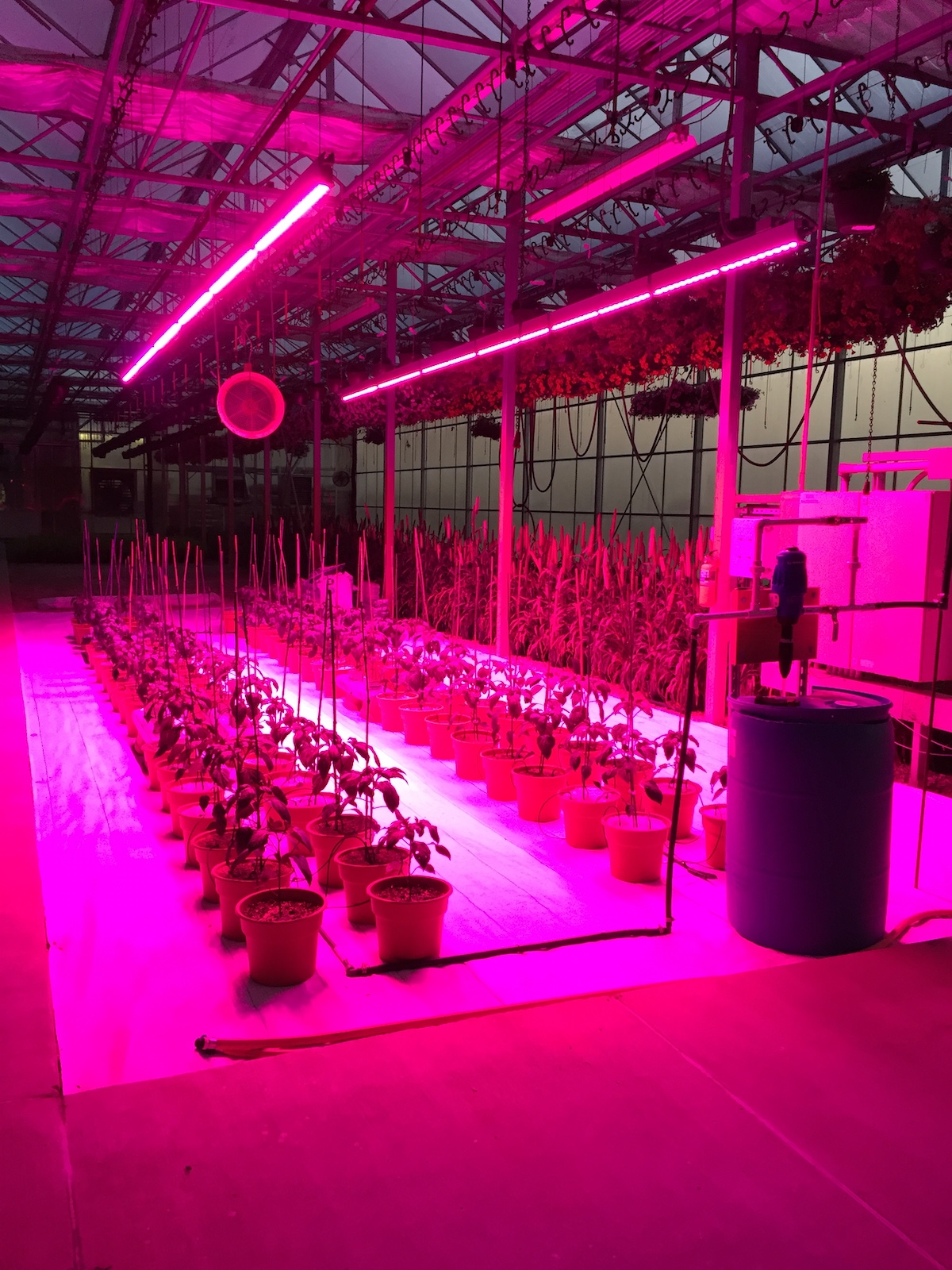
Marcelis also advises CEA operators to consider what impacts energy grids moving to renewable energy sources might have on energy availability and pricing for their facilities. As Europe has moved toward a more renewable energy grid–a thing he stresses as good and needed–a secondary effect has been rapidly fluctuating energy prices.
“If we have a sunny, windy day in the Netherlands, a grower can get money by using electricity,” he shares. “And on a dull, cloudy day without wind, the electricity price will rise very much. So, we need to think much more in terms of maximizing the cost of energy use.” One potential solution: “Make the light intensity dependent on the electricity cost–I’m sure that that will come in the coming years,” Marcelis says.
Optimizing a CEA facility for resource efficiency and crop productivity is a journey that likely will take years to complete (if that is truly ever possible). Resource Innovation Institute’s Lighting Best Practices Guide can help steer you in your lighting optimization projects and help you future-proof your operation.
Meet Our Members
Thank you to our members who participated in this blog. Read more about their organizations below:
Mikhail Sagal is Founder and President of TSRgrow. With over 14 years of experience in LED lighting solutions and over 29 issued patents, he is a pioneer in LED lighting and has a proven track record of product innovation and commercialization. A longtime player in the space, Mikhail believes the key to success in an increasingly competitive industry is maintaining the culture of collaboration that growers and suppliers have valued for so long. Prior to founding TSRgrow in 2009, Sagal worked for 13 years developing and commercializing thermally conductive plastics with companies worldwide. His technical experience includes thermal management, LED system and product design, manufacturing systems, design for manufacturing, wireless control system and applications in solid state lighting. It was his early understanding of the power of LEDs that led him to founding TSRgrow, quickly expanding the company beyond lighting to deliver a full horticultural growing solution.
Prof. Dr. Leo Marcelis is head of the chair group Horticulture and Product Physiology at Wageningen University, The Netherlands. This group holds a strong position in research and education on vertical farming, greenhouse horticulture and post-harvest quality.
His research focuses on sustainable production of high quality products in vertical farms and greenhouses; Leo has a strong background in plant physiology, crop monitoring, computational modelling and experimentation. He has extensively studied the physiology, growth and development of plants in order to improve sustainability and quality of crop production in greenhouses and vertical farms.


